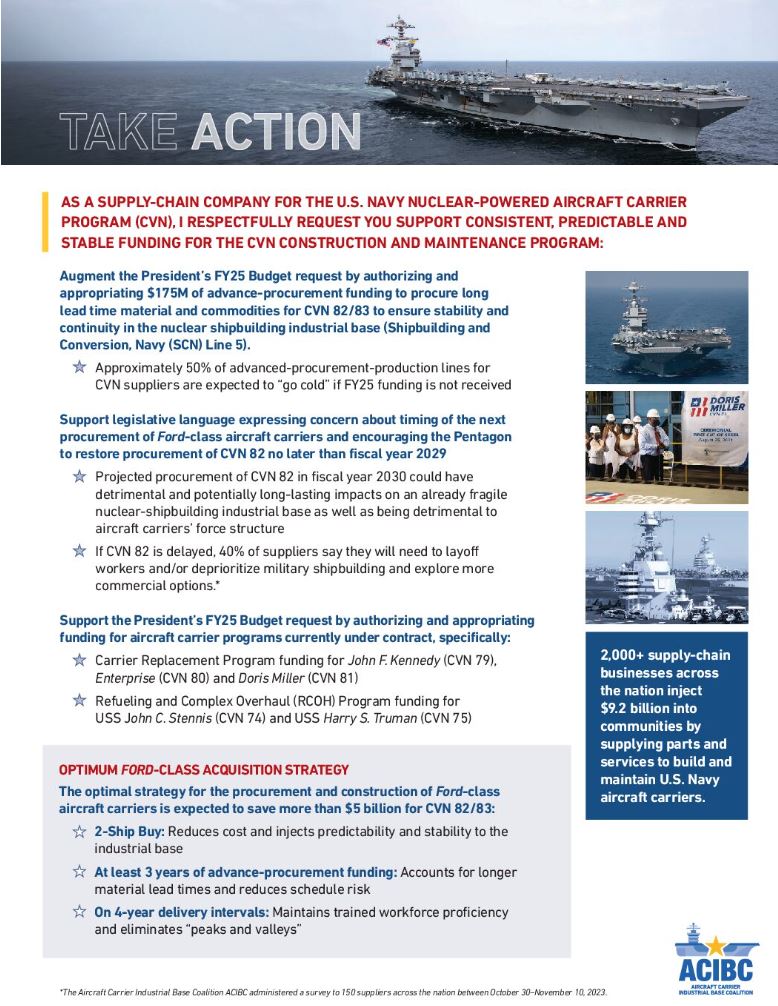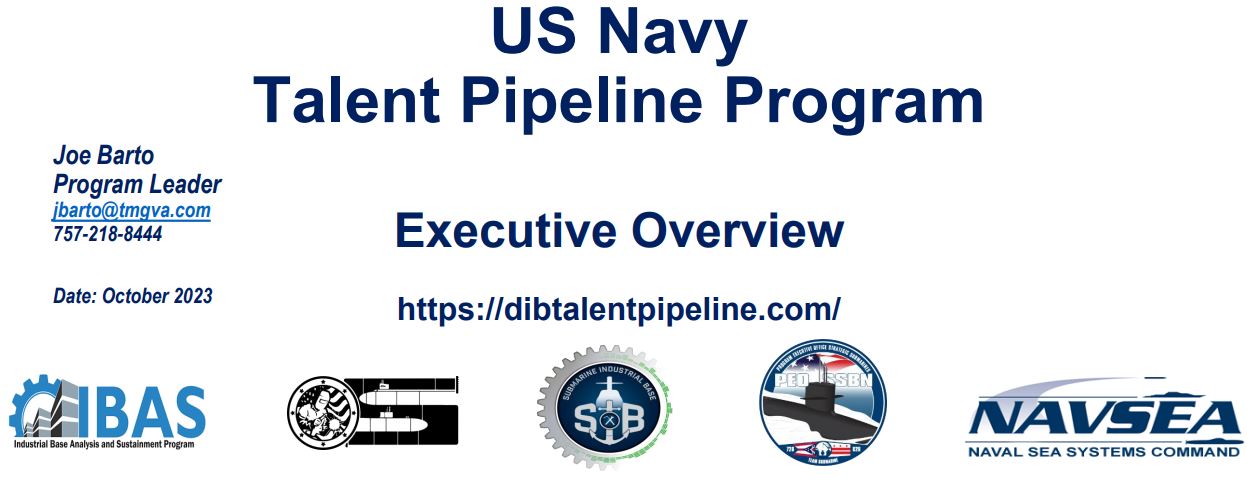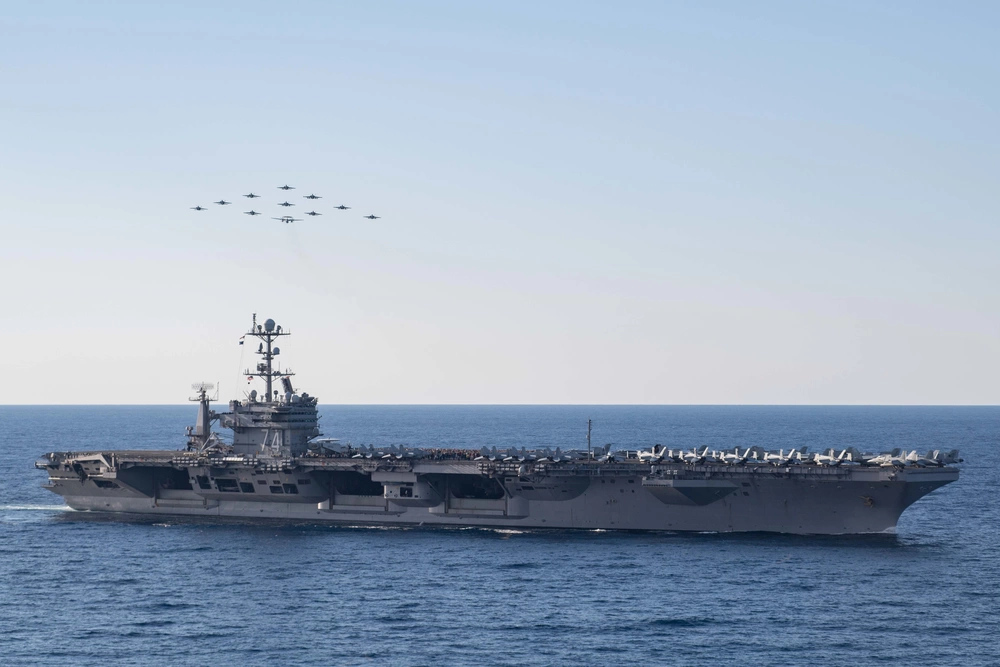newsROOM
- All
- Congressional Tours
- Ford Class
- Industry News
- Legislative Priorities
- Our Impact
- Resources
- Supplier Stories
Resources
ACIBC Legislative Ask Sheet
Read more about ACIBC’s key legislative priorities for this year, including augmenting the President’s FY25 Budget request by authorizing and appropriating $175M of advance-procurement funding ...
May 14, 2024
Learn More
Resources
US Navy Talent Pipeline Program
The Defense Industrial Base Talent Pipeline Program (TPP)’s mission is to energize and engage the American economy by creating and sustaining a maritime and defense ...
May 14, 2024
Learn More
Supplier Stories
April 2024 Supplier Spotlight: JA Moody
or over a century, Aircraft Carriers have symbolized American strength and prowess, often hailed as “100,000 tons of naval diplomacy.” For this month’s Supplier Spotlight, ...
May 6, 2024
Learn More
Legislative Priorities
2025 Budget Testimony
On Wednesday, April 19, leaders in the U.S. Navy and Marine Corps testified in front of the House Appropriations Subcommittee on Defense about the 2025 ...
May 6, 2024
Learn More
Industry News
CVN 74 RCOH
The refueling and complex overhaul (RCOH) of USS John C. Stennis (CVN 74) is now 65% complete. This is a major milestone for USS John ...
May 6, 2024
Learn More
Sign Up For Our Email List
Stay up to date with ACIBC and industry news by signing up to receive our email alerts.
Menu
Menu
Menu
Menu
Menu
Menu





